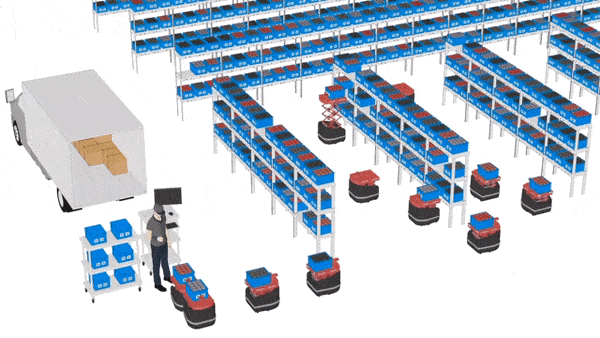
Picking is a precise, repetitive task that takes place in every fulfillment warehouse. It’s the cornerstone of the e-commerce industry, and also one of the biggest expenses, often making up more than 50% of operational costs.
Long gone, however, are the days of grabbing a few romance novels and a computer book off a shelf and dropping them into a shipping box: workers now push carts loaded with hundreds of items down long aisles, covering 12-14 miles per shift. It’s tedious, back-breaking work, but it also requires a high level of attention if you want to get the right products to your customers on time.
Complicating fulfillment is the ever-increasing number of SKUs warehouses need to stock in order to remain competitive, as well as the necessity of clearing out older items quickly to make way for new inventory shipments. All of this makes what occurs at the pick station crucial to the success of your business, and that’s where automation and robotics can be transformative.
Smart Sortation
The journey an online order makes from website to doorstep is a complex one that’s made even more challenging due to expectations of fast, free shipping across the board. It’s this overriding need for speed that often takes a toll on accuracy, both when it comes to stocking items in the warehouse and assembling orders for shipment.
Conventional wisdom dictates that the fewer hands that touch a product as it makes its way to a customer the better, as every touch consumes time and creates an opportunity for errors. That’s why inVia’s comprehensive AI-driven robotics platform is designed to help automate every step of the process, from the intake and storage of new inventory, to the picking, packing, and shipping of orders. At the heart of this process is a feature we call “smart sortation.”

When orders are placed on a website and sent to the warehouse, inVia Logic examines those orders and looks for common items while also checking inventory levels. Identifying that commonality is one of the steps that streamline sortation and improve accuracy.
For example, if five orders come in with eight items in each order, that’s 40 items in total. But if each of those five orders contains one rubber duck and two beach balls, that means 15 of the 40 items share a commonality. This is frequently the case when items are put on sale and promoted on the website. As a result, you’ll see more commonality on peak days then you do on normal days because customers are reacting to the promotion.
At that point, the InVia Logic dispatches our autonomous mobile robots (AMRs) throughout the warehouse along routes that are continuously optimized for retrieving items. The AMRs pull the right totes off the shelves and bring them to the picking station’s virtual sortation wall. A screen lets the worker know which items go into the containers, allowing them to fulfill individual orders more accurately and efficiently. In addition, this picking process is “waveless,” which means the system is constantly adding orders to the wall. A batch of orders does not need to be picked fully before the next batch is released.
Why Does it Matter?
Errors are expensive—and they add up quickly. By optimizing the sortation process from the moment orders enter the warehouse to when they leave, inVia’s automation software and robots complete the task of moving your warehouse inventory with simplicity and precision.
If you would like to learn more about our system can help you boost fulfillment while reducing costly errors and incomplete picks, contact our sales team today.